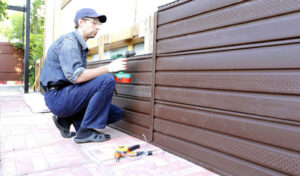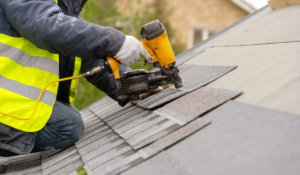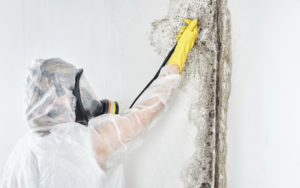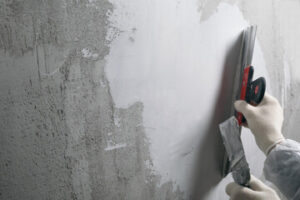Whether you’re looking to add traditional or modern details to your home, vinyl siding can make a big difference. It is also one of the most cost-friendly exterior cladding options.

Vinyl siding has a slick surface and resists dirt, so it doesn’t require much annual maintenance. However, it may fade over time due to exposure to UV rays.
When properly installed, vinyl siding can provide excellent insulation capabilities for your home. This will reduce your energy consumption and lower your energy bills significantly.
Insulated vinyl is available in a wide variety of colors and styles to meet your design aesthetic and energy efficiency needs. The material can also be combined with other insulation materials to increase its R-value. This will make your home more energy efficient and may even qualify you for tax credits.
Unlike wood, vinyl does not warp or crack as it weathers. Its rigidity and durability are unmatched, making it a popular choice for residential construction. It is also easy to install and maintain. In addition, it is resistant to rot and insect infestation. Additionally, it is non-toxic and does not emit odors or toxic fumes. Moreover, it is recyclable and has low embodied energy, compared to brick and aluminum (though it does have higher embodied energy than wood).
However, the longevity of vinyl siding can be a drawback. It may not be a good choice for homes in extreme climates. The expansion and contraction of the individual panels can cause them to split, especially if they are painted. Vinyl can also be cracked by a lawnmower, fallen limbs, or hail. In addition, if the vinyl is painted, it can absorb heat and lose its color over time.
Additionally, the vinyl isn’t the best option for a tight or unique space because it can be difficult to cut it to fit into the wall’s studs. Another drawback is that vinyl isn’t always suitable for cladding systems that require high spannings, such as a vaulted ceiling. Nevertheless, it is an excellent alternative for most applications and can be combined with other claddings, such as shingles or bricks, to improve its appearance and performance.
Low Maintenance
Many homeowners are hesitant to invest in siding upgrades because of the time and effort required for maintenance. But vinyl is one of the most affordable and least labor-intensive exterior materials. It does not require painting, scraping, or sanding and can be power washed to remove dirt, cobwebs, mildew and other debris. It is also resistant to cracking and fading, which can be a problem for wood-based products over time.
Another great feature of this material is that it is moisture-resistant, which can help keep your home safe from mold and rot, which are common problems caused by water damage. The fact that it is a plastic resin means that it is also termite proof, unlike natural wood options. And, since it is not susceptible to rotting or flaking, it is also less likely to attract insects.
In terms of avoiding damage from the elements, vinyl is quite durable and will stand up to wind, rain, hail, sleet and snow with little issue. It does not swell or contract like wood, and it is also highly fire resistant. In addition, it is available with a variety of architectural trim options and accessories, which can add to your home’s design aesthetic without the worry of swelling, cracking, or insect infestation.
Vinyl is a very versatile product and can be found in a wide range of styles, from traditional panels that look similar to wood clapboard to details such as cedar shakes and Victorian scallops. It can also be cut to fit tight spaces and corners that are difficult to reach with other types of siding. It can also be cut to match the exact length of your home, eliminating seams and reducing the likelihood of future leaks.
Variety of Styles
In addition to a wide range of colors and textures, vinyl can be purchased in a variety of different styles. While traditional panels that mimic wood are popular and easy to install, homeowners also have the option of more intricate details like cedar shakes or Victorian scallops that add a distinctive look without sacrificing practicality. Additionally, vinyl is often cut to fit into tight spaces that can’t be reached by other types of cladding.
Another reason that many people choose to invest in vinyl siding is the lack of maintenance required. Unlike wood, which needs to be painted and stained on a regular basis, vinyl has a slick surface that typically resists dirt, debris, dust, and grime. All that is typically needed to maintain its appearance is a periodic cleaning with soap and water.
Depending on the quality of the product, this may not always be enough to keep it looking new. When buying vinyl siding, it’s important to select a company that is committed to using only the highest-quality products. Additionally, it is important to find a contractor with extensive experience in installing vinyl siding, as mistakes can be costly and even lead to structural damage to the home.
As a general rule, homeowners should only consider replacing their existing siding if it is beginning to show signs of wear. This could include missing panels, significant color fading or the presence of mold or mildew. Ultimately, it is essential to choose a company that offers a comprehensive warranty to guarantee the long-term performance of your vinyl. An extended warranty will also ensure that if any problems do occur, they are taken care of as quickly as possible to limit the impact on the homeowner.
Long Lifespan
When you select a type of exterior cladding for your home, one of your top concerns will be its lifespan. After all, you want it to protect your property and look great for as long as possible. This is where vinyl really shines. Made from a specialized type of plastic, it requires almost no maintenance from you other than rinsing it down now and then. In addition, it doesn’t attract the same types of pests as metal siding and fewer than wood.
Unlike some other cladding materials, it also doesn’t have the tendency to rot or be damaged by moisture. This is due to its unique formation that’s resistant to moisture, which will not impact the structural integrity of your house. It also resists the corrosive effects of sunlight, which can cause other cladding materials to fade over time.
Vinyl is also scratch-resistant, which means that it doesn’t easily get damaged by debris from trees or other objects. It can also withstand harsh Eastern Ontario weather conditions such as freezing temperatures, heavy snowfall, and strong winds without being damaged or buckling.
The overall durability of vinyl is impacted by its thickness, however. On the low end of the thickness spectrum is inexpensive builder’s grade, while premium vinyl is very thick and offers maximum durability.
Another factor that impacts vinyl’s lifespan is your climate and weather conditions. If your area is prone to heavy rains, intense sun exposure or high wind speeds, you may have to replace your vinyl siding more frequently than someone living in a milder climate.
Cost-Effective
Choosing the right siding material for your home can be an overwhelming experience. There are a lot of things to consider, including initial purchase price, installation costs, and long-term maintenance expenses. Vinyl siding offers a cost-effective alternative to other options on the market, making it an appealing option for homeowners who want to save money in the long run.
While other siding materials may be less expensive initially, the cost of upkeep can add up over time. Vinyl requires minimal maintenance, requiring only occasional cleaning and a soft brush to keep it looking fresh. It is also resistant to rot, insect damage, and weather damage, which can save you on costly repairs and replacements.
Another significant benefit of vinyl siding is its energy efficiency. Its insulation helps seal gaps that would normally allow cold air to leak into your home during the winter, and hot air to escape during the summer. This can significantly reduce your heating and cooling bills, saving you a substantial amount of money in the long run.
Lastly, vinyl is an environmentally conscious option, as it does not require deforestation or mining to produce. It is also durable enough to last for a very long time, and it does not release harmful chemicals into the environment.
Despite its many benefits, vinyl is not without its drawbacks. One major concern is color fading due to sun exposure. However, newer vinyl has been developed that utilizes acrylate styrene-acrylonitrile, which is effective in preventing the material from fading over time. It is also not as moisture-resistant as other cladding materials and should be installed with adequate ventilation to prevent water buildup. It is also susceptible to cracking and bending due to expansion and contraction caused by temperature changes.








